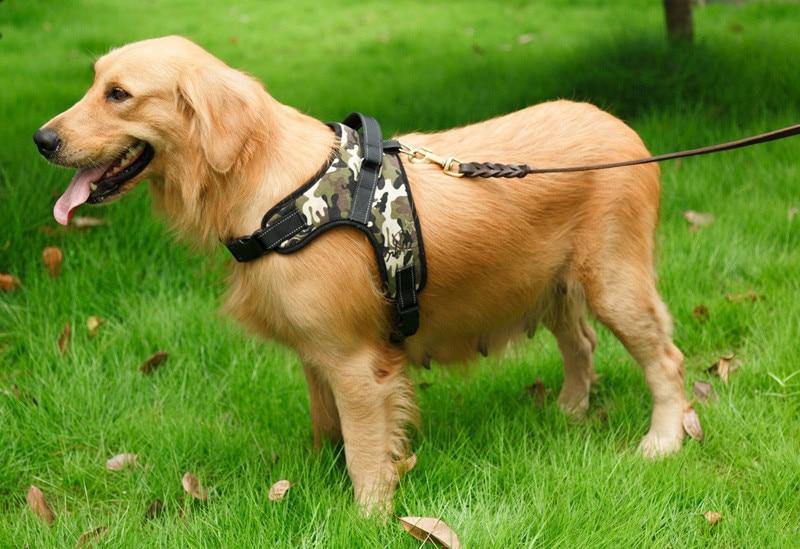Take the dog for a walk. Such a simple task, right? All you have to do is put the leash on your pup and go for a few laps around the block, and you and your dog will both have your morning or afternoon exercise done! But sometimes, walking a dog can become a hassle and even a chore due to bad habits that our dogs develop over time. It isn’t much fun when your 120-pound Great Dane takes you for a walk instead of the other way around! It might not be much fun either when your dog stops in its tracks every twenty seconds because it just has to fully investigate everything it smells! Keep reading for some tips and tricks on how to improve your walk with your pup and actually enjoy being out and about with your dog again!
Pulling while walking
One of the most common issues dog owners face regarding walking their dogs is leash pulling. Let’s face it - we just don’t walk fast enough for our dogs. Even if we ran as fast as possible, it still wouldn’t be fast enough for our pups! Dogs will tug and pull at their leash with their neck and collar to try to pull their owner along and make them move faster. This ends up becoming frustrating for both owner and dog. It can even be harmful to the dog since the leash and collar can put so much pressure on their necks.
Instead of getting into a tug of war with your dog, go back to the basics and focus on loose-leash training. Loose-leash training is simply a matter of rewarding your dog with a treat and high praise when the leash goes slack or is loose instead of being pulled against its collar or harness. For example, when your dog starts to get ahead of you, quickly change direction, and when he turns to catch up to you, and the leash becomes slack, reward him. This should help motivate your dog to stick close by you and to keep the leash loose and not tight.
Also, make sure you have a good quality leash for your dog. The usual recommendation is that leashes be about six feet in length. The leash should have at least one or two knots or loops in it for you to grip onto to shorten the length of the leash more easily. For most dogs, nylon and rope-style leashes are great options.
If your dog is already fairly set in its pulling ways, a safety harness, specifically a no-pull harness, might be your next best bet. For example, if a dog tries to pull while wearing this Adjustable No Pull Dog Harness with Handle, instead of being choked with a collar, the harness will simply spin the dog towards you and away from the direction that it is pulling, making the dog so much easier to manage and redirect its energy! These harnesses work for dogs of all shapes and sizes and are the perfect dog walking accessories! It will make walking your dog so much easier!
Distractions
Earlier, we mentioned how dogs often love to stop and smell the roses, so to speak, except that they can sometimes spend a little bit too long sniffing and make walks painfully boring for their humans who weren’t blessed with the same amazing sense of smell! Of course, dogs are natural explorers and adventurers. We should absolutely let them be themselves and get their much-needed mental stimulation, but sometimes it is important that we be able to tell them when it is time to move along.
This is where teaching your dog certain key phrases can come in quite handy. Choose a phrase that you think might work for you, like “leave it” or “keep it moving,” to use when you want to tell your dog to move its cute little butt along. When the dog responds to the phrase and looks at you, praise and reward it! Doing this will make the dog very excited and more likely to want to “keep it moving” rather than continue smelling.
Sometimes dogs can become easily distracted on walks, and in some cases, they can even become reactive to certain things in their environment, like people and other animals. To help make your walks more enjoyable, focus on your dog’s reactions to these things during your walks and see how you can help minimize any unpleasantness.
For example, if your dog just really hates squirrels and only sees red when she happens upon a squirrel in her neighborhood, perhaps taking her for a walk in a newer neighborhood with newer, less established trees or homes for squirrels would be beneficial. If that just isn’t practical, consider focusing on training your dog to become more accustomed to squirrels and less reactive to their presence.
To do this, you’ll first have to train your dog to focus on you as soon as you tell her to. For example, once you make a certain sound like a whistle or a click, your dog should be entirely focused on you. To do this, make the sound, and when your dog finally looks you in the eye, reward them with a treat immediately. Continue to do this until it starts to register that eye contact will equal a reward. Then you can space this out to further distances, like from across the room or from across a field. Once you can quickly get your dog’s attention and give it a command, the hope is that she’ll forget whatever it was she was obsessing over and return her thoughts back to you.
Have fun!
Last but certainly not least, don’t forget to make the walk fun! Don’t just take the same route you always do. Switch things up every once in a while, and give your doggo and you a chance to explore – even if it is just walking the opposite direction you normally do! Or maybe plan a walk with a friend and their dog and go together. Your dog and you both will likely enjoy having a friend along! Oh, and don’t forget the treats and the poop bags!

